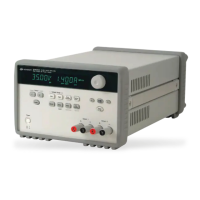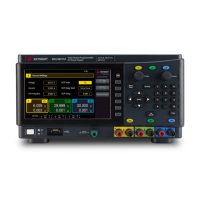Getting Started 1
Keysight E364xA User’s and Service Guide 49
Voltage drops
The load wires must also be large enough to avoid excessive voltage drops due to
the impedance of the wires. In general, if the wires are heavy enough to carry the
maximum short circuit current without overheating, excessive voltage drops will
not be a problem. The voltage drops across the load wires should be limited to
less than two volts. Refer to Table 1-7 to calculate the voltage drop for some
commonly used AWG copper wires.
Load consideration
Capacitive loading
The power supply will be stable for almost any size load capacitance. However,
large load capacitors may cause transient response ringing. Certain combinations
of load capacitance, equivalent series resistance, and load lead inductance may
result in instability (oscillation). If this occurs, the problem may often be solved by
either increasing or decreasing the size of the capacitive load.
A large load capacitor may cause the power supply to cross into CC or
unregulated mode momentarily when the output voltage is reprogrammed. The
slew rate of the output voltage will be limited to the current setting divided by the
total load capacitance (internal and external).
Inductive loading
Inductive loads present no loop stability problems in the constant voltage mode.
In the constant current mode, inductive loads form a parallel resonance with the
power supply’s output capacitor. Generally this will not affect the stability of the
power supply, but it may cause ringing of the current in the load.
To satisfy safety requirements, load wires must be heavy enough not to overheat
when carrying the maximum short-circuit output current of the power supply. If
there is more than one load, then any pair of load wires must be capable of safely
carrying the full-rated current of the power supply.

